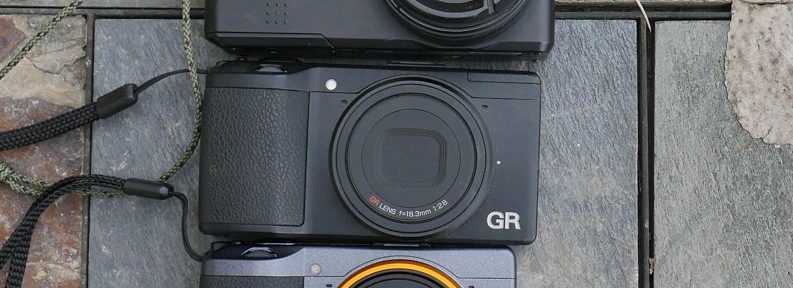I own a pretty extensive array of Micro 4/3 lenses and an Olympus OMD E-M1 Micro 4/3 camera body. This interchangeable lens system provides a lot of flexibility in my photography. However, even though the Micro 4/3 format allows for much smaller cameras and lenses than other interchangeable lens systems, I find that I seldom take my Micro 4/3 gear with me into the backcountry.
Most trips, I take a compact, fixed lens camera (or sometimes two of them.) The weight and bulk advantages of a fixed lens compact camera are just too great when I’m climbing or travelling long distances in the backcountry.
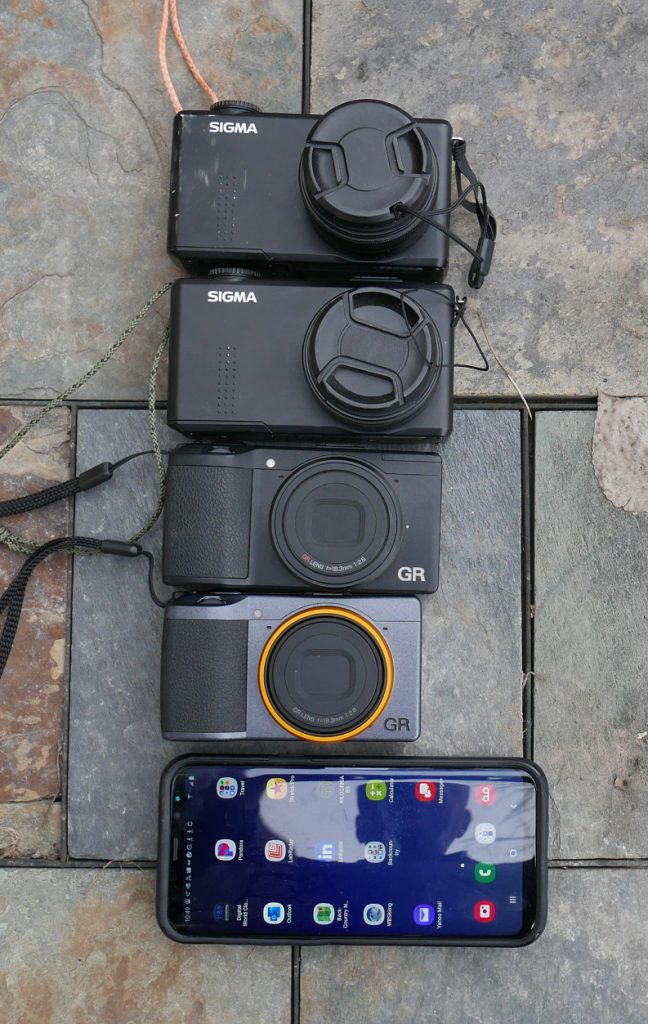
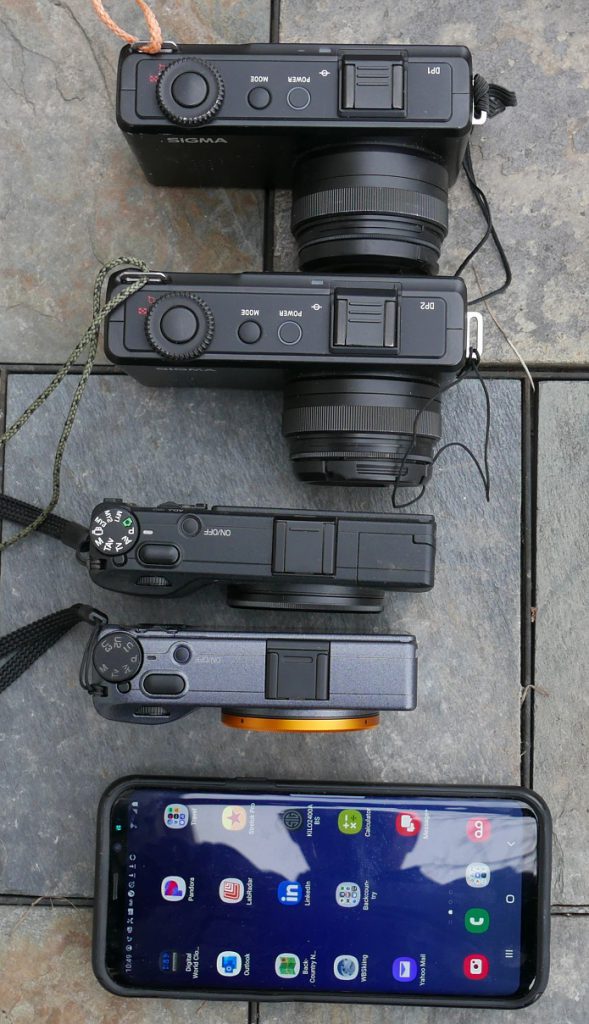
What makes a good backcountry camera?
#1 Image quality. I am a stickler for good image quality. If I didn’t care a lot about image quality, I would just use the camera on my phone. However, I want my photos to capture the grandeur and beauty and intensity of the places I visit, and even the best phone camera comes up short when it comes to detail, colors, and sharpness. An excellent lens, a good sensor, and the ability to shoot RAW files are all must haves.
#2 Compact size. I need a camera that doesn’t weigh a lot and doesn’t take up a lot of space.
#3 Fits well in a good, padded case. I need to be able to carry the camera in a very accessible spot; close at hand while climbing, hiking, or skiing. If I have to keep my camera in my backpack, it won’t get used much and is just dead weight and wasted space. I need a case I can attach to either my climbing harness, on my pack shoulder strap or pack hip belt. The case needs to protect the camera from the inevitable bumps and shocks of outdoor activities, and also protect it from snow and light rain. (For heavy rain, I can just put the camera deep in my pack, as I won’t be taking photos if it’s raining hard.)
#4 Controls that I can work with gloves. I spend a lot of time wearing gloves. The main buttons and dials for exposure control need to be simple enough that I can work them with gloves on. A camera that can only be adjusted through complicated menus or with a touch screen doesn’t work well when wearing gloves.
Things that are nice to have, but not mandatory:
Waterproofing. I don’t need a camera to be waterproof. It would be great if one were, but, at least today, nobody makes a waterproof camera with the image quality I demand. Maybe that will change in the future. Certainly, Olympus or Panasonic have the capability to put a large sensor and high-end lens into one of their weatherproof bodies. Until then, I will just take care to keep my cameras dry.
Zoom lenses. While zoom lenses are convenient, they require compromises in image quality, especially in smaller sizes. Also, a zoom lens is inherently heavier and more bulky than a fixed, prime lens. A good, fixed focal length prime lens will almost always be better than a zoom of the same size and weight.
Video quality. I don’t shoot much video in the backcountry, and when I do, it tends to be simple stuff. I don’t have aspirations to produce breathtaking documentary video footage.
GPS, Bluetooth, In-camera editing, etc. For me, these features are not even “nice to haves” because I don’t need my camera to communicate with satellites, or bluetooth devices. I don’t need to do in-camera editing because I do all of my processing at home on my computer.
The Compact Backcountry Cameras with the Highest Image Quality: Sigma DP1 Merrill and DP2 Merrill.
The DP1 and DP2 Merrill:
These cameras came out in 2012. Sigma ceased production of the DP Merrill line just a couple of years later. These two cameras are almost identical, with the only significant difference being the focal length of their fixed lenses. The DP1 has a 19mm lens (28mm full frame equivalent) the DP2 has a 30mm lens (46 mm full frame equivalent.)
The DP Merrill series never really had a chance with the general public, and most reviewers panned the cameras for poor performance at high ISO settings, very long write times, extremely short battery life, terrible video quality, autofocus that has a difficult time tracking fast moving objects, no image stabilization, mediocre out of camera JPEGS, and no RAW support from Adobe Photoshop or other popular photography programs. (You have to use Sigma’s clunky Photo Pro software to process the RAW files.)
All of these criticisms are pretty much true, but none of these limitations have ever gotten in the way of my taking a lot of very pleasing pictures in the backcountry. The reason I put up with and work around these limitations is the amazing Foveon sensors and very high quality lenses.
The DP Merrill cameras have stacked, 3 layer Foveon sensors that are unique in the digital camera world. There’s been a lot of arguments over whether this sensor is a 46 megapixel sensor as claimed by Sigma (adding up the pixels of all three layers,) or a 15.4 megapixel sensor (the pixels in one layer of the array.) I don’t really know or care enough about the engineering to argue about number of mega pixels. What I do know is that this camera is capable of truly exceptional image quality. The very high quality lenses, coupled with the Foveon sensor make the DP Merrill cameras able to compete (on pure image quality) with much more modern, more expensive, much bigger, and much heavier cameras.
To provide some examples of the sort of detail, color rendition, and image quality the DP Merrill cameras are capable of, I have set out below some photos taken, with links to the full high-resolution files. (Some of these are stitched panoramas.) These are really big files and might take a long time to download, even on high speed internet. From looking at the original high-res files, it is apparent that these little cameras are capable of taking very high quality images.

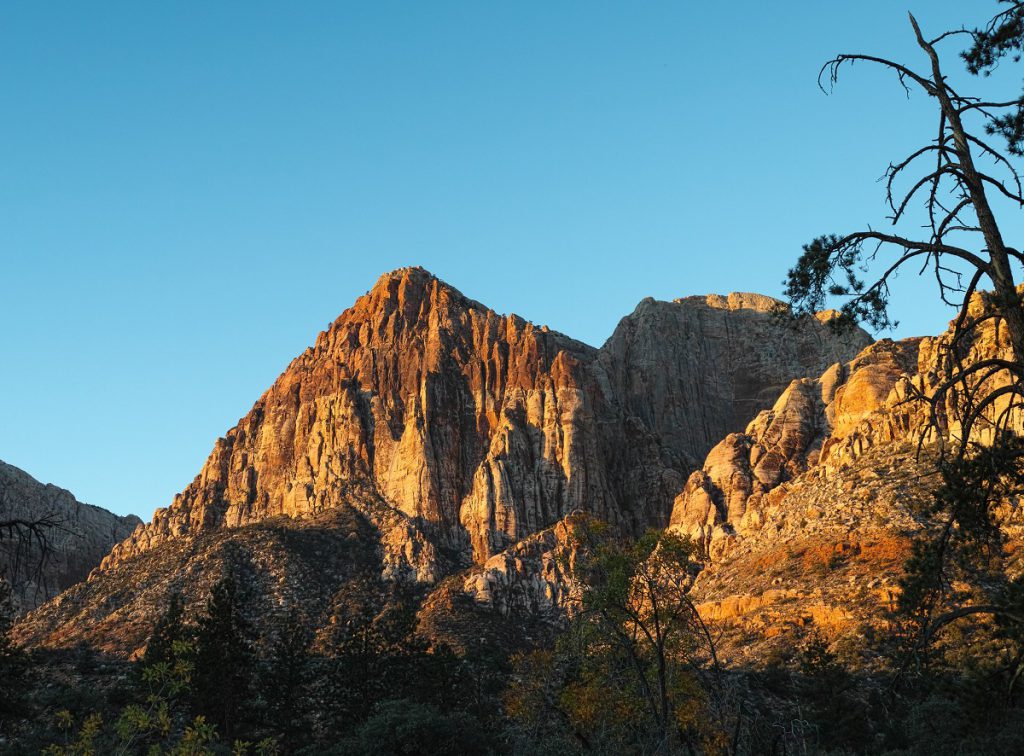
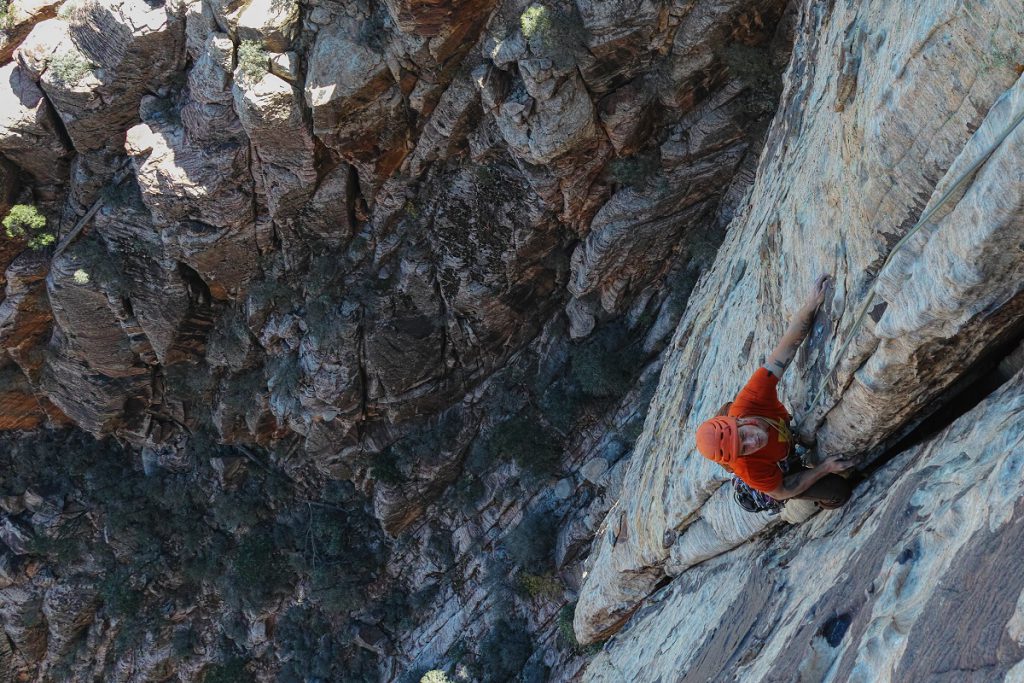
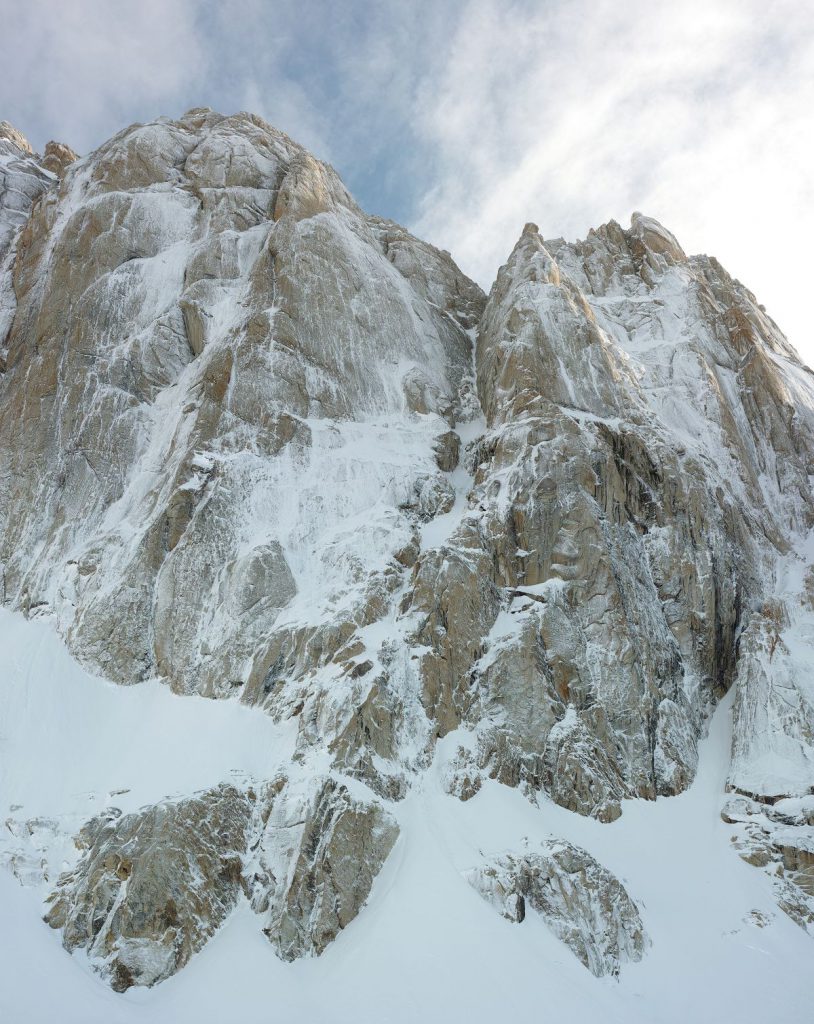
Size and Weight: The DP1 and DP2 are virtually identical in size and weight, with the DP1 weighing 14.1 ounces and the DP2 at 13.9 ounces. These cameras are on the large size of “pocketable,” but are definitely more compact than most other cameras with similar image quality output.
Camera Cases for the DP Merrill Cameras: There are some very good camera cases available for the DP1 and DP2 Merrill Cameras. The Lowe Pro Dashpoint 20 fits either the DP1 or DP2 camera quite well (albeit snugly.) This case has loops that allow you to clip the case to a harness with carabiners, and also both horizontal and vertical velcro straps that allow for attachment to either shoulder straps or the hip belt of a pack.
The Mountainsmith Zoom S case (out of production, but you may find one if you search hard enough.) will fit both the DP1 and DP2 together, and is a nice, compact way to carry both cameras if you wish.
The DP1 and DP2 both have relatively large knobs and buttons that can be easily manipulated, even with gloves on. With practice, I can even do most adjustments one handed. The biggest ergonomic issue is that they both have removeable lens caps which you have to manually take on and off. This is not nearly as convenient as automatically retractable lens covers.
DP Merrill Conclusions: As one reviewer put it, the DP Merrill is like a medium format camera you can put in your pocket. It’s amazing to have such a capable photographic tool in such a small, compact package. When choosing between the DP1 (28mm equivalent) and DP2 (46mm equivalent,) I will usually take the DP2. I find the extra magnification useful, and if I really need a wider angle, I tend to take multiple shots and stitch them into a panorama with my editing software. If I am going somewhere with truly spectacular scenery, the DP Merrills are my cameras of choice.
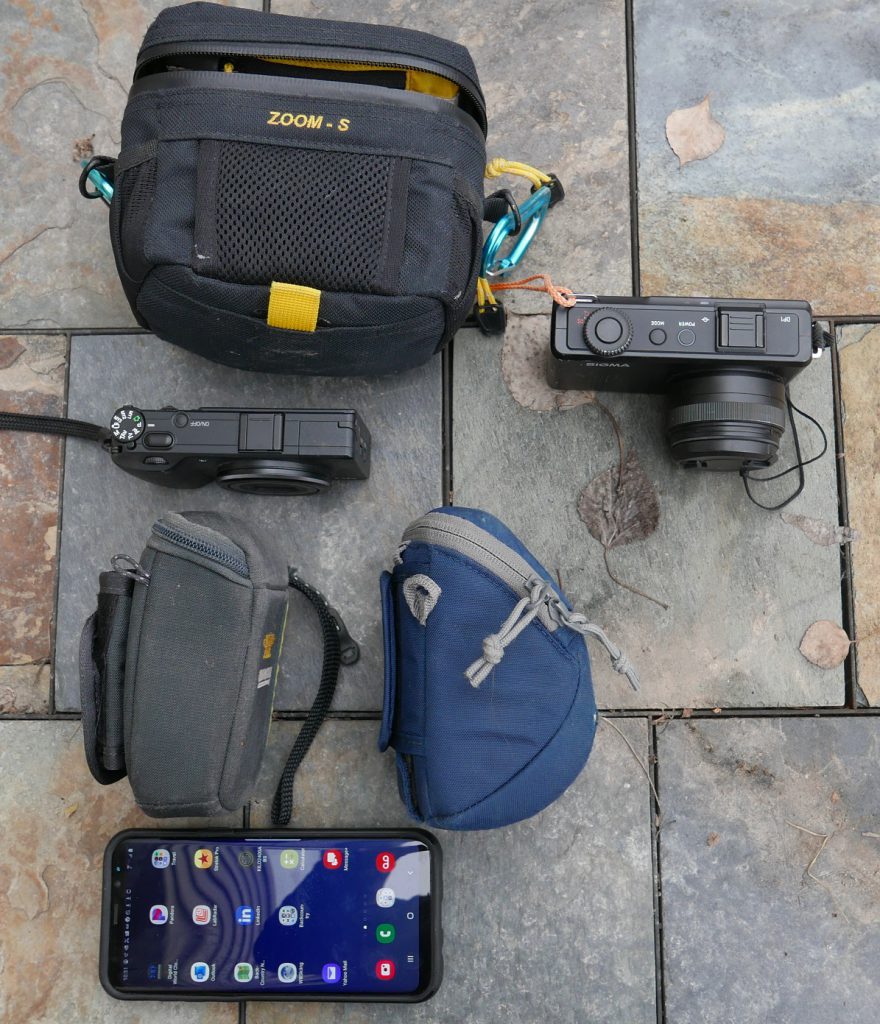
The Tiny Pocket Sized Overachiever: Ricoh GR III
I have been using Ricoh GR cameras for a long time. My first GR was the original 35mm film version, the legendary GR1. Later, when digital photography began to eclipse film cameras, I bought the GR Digital II, which was a bit of a disappointment. The next generation digital Ricoh GR was a much better camera, with decent image quality. I didn’t bother to buy the Ricoh GR II, as it wasn’t significantly different than the GR, but now, I’ve upgraded to the new Ricoh GR III.
What’s great about the Ricoh GR cameras? Mostly the size. These cameras are really really small. The 8.9 ounce GR III is the smallest GR yet, even smaller than the GR and GRII predecessors.
In spite of the small size, they have very good image quality, aided by their uniformly excellent lenses. All of the GR series cameras have 28mm full frame equivalent lenses, which, for the GR III is a 18.3mm lens. The 28 mm format is ideal for wide angle scenic shots and close up shots of people. The lens on the GR III also has a decent macro mode, so taking pictures of small subjects is easy.
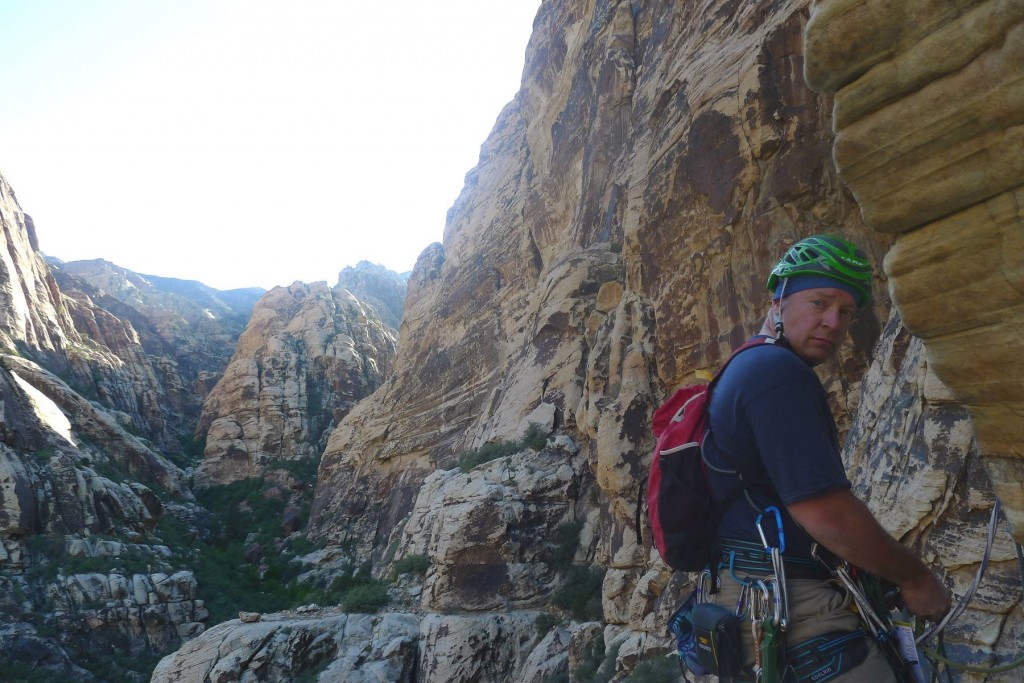
The GR III’s 24 megapixel APS-C sensor allows for good image quality. I haven’t used this camera as extensively as the others in this review, but the images have certainly been good enough for displaying on web pages. So far, I have not taken any shots that merited turning into a large print, but hopefully I will get that chance.
The GR III is the first camera in the GR line to incorporate image stabilization. It’s also a bit smaller than previous GR cameras. The trade-off is that there is no built in flash. I think that this was a good trade, as I almost never used the built in flash, but I often want to shoot at lower shutter speeds.
The Compact Point and Shoot: Panasonic LX100
Panasonic LX100 14.2 ounces
The Panasonic LX100 is a camera that ticks a lot of boxes. It has a good 12 MP sensor, a sharp 24-75mm (full frame equivalent) zoom lens with a relatively large maximum f-stop of 1.7-2.8 for excellent light gathering capabilities. It incorporates image stabilization to combat shaky hands. Controls and ergonomics are excellent, with dials that control aperture, shutter speed, and exposure compensation. These dial controls are very intuitive and easy to operate even when wearing gloves. (In general, I find dials easier to manipulate with gloves compared with buttons.)
One feature that the LX100 has, which is relatively unusual for pocket cameras, is a built-in viewfinder. While the back screen is adequate in most cases, I’ve found that having a viewfinder can sometimes be very useful in composition, and is particularly useful in high-glare situations such as snowfields etc.
Autofocus is very accurate, and I’ve had very few out of focus shots. In full automatic mode, the camera really is a point and shoot, and you can take pictures with a minimum of messing with the controls. This is good when you’re trying to snap pictures quickly while climbing or belaying.
The LX100 comes standard with a regular, removable lens cap. However, there is also an optional automatic petal cap that is very convenient, as it obviates the need to remove and replace the lens cap. Just turn the camera on, and the lens pops out. A couple of caveats about this nifty lens cap: It can fall off. It attaches with a twist but will unattach itself without much effort. The first time I used this cap while climbing, the cap came off and fell down the route. Luckily, I was able to retrieve it. To prevent further losses, I used a small drop of super glue to secure the cap to the camera a bit more permanently. It’s worked well since then.
The other caveat when using this automatic cap is that not all lens filters are compatible with this cap. Most lens caps are too thick and will interfere with the cap’s operation. However, the ultra thin Cokin 49mm Pure Harmonie Ultra Slim UV-MC Round Screw-On Filter works perfectly, so there is a good filter option available.
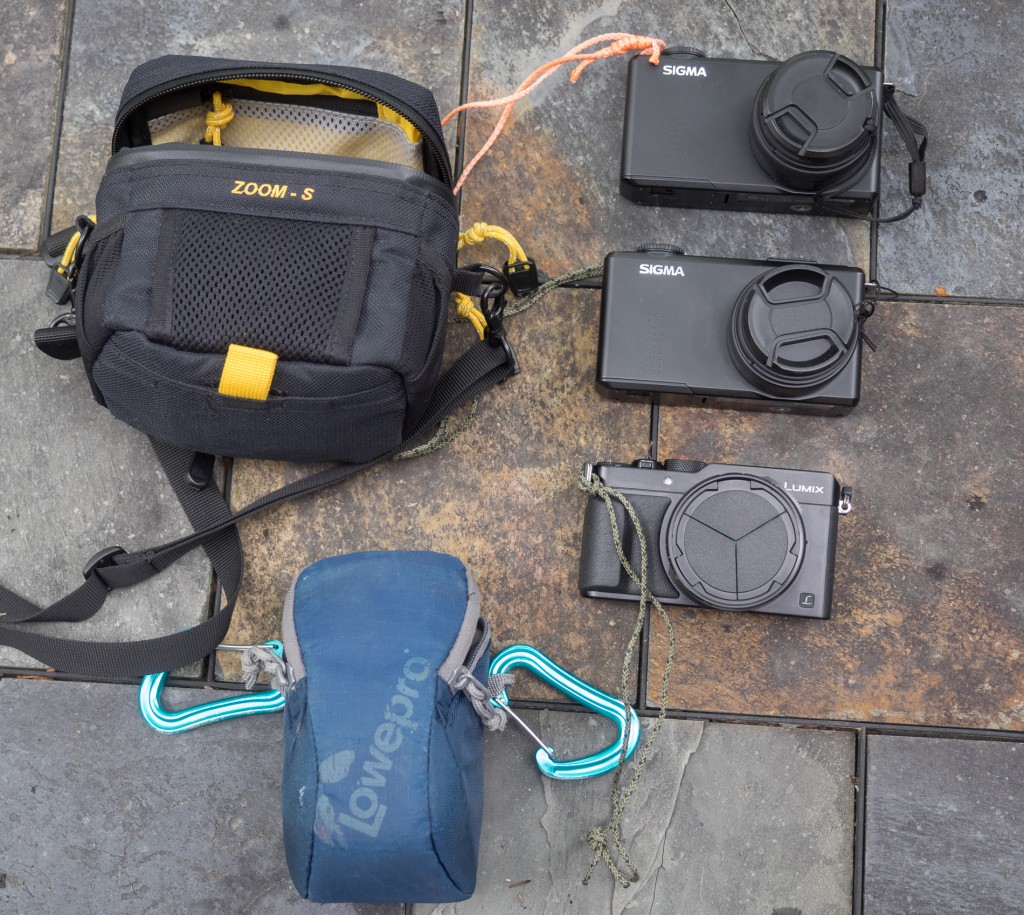


The LX100 shoots 4k video, which is higher resolution than any of the other cameras in this review. I don’t shoot much video in the backcountry, but if I’m doing something that I want to take video of, the LX100 is the obvious answer.
Conclusion: Which Camera is the Best?
The obvious answer is that none of these is “the best” at everything. Each of these cameras is best suited for particular jobs. The camera I take with me the most often is the Ricoh GR III. It’s light and compact and easy to carry. It’s simple to use. Its image quality is very good. It’s my default camera for day trips, when I want to be prepared for whatever photographic opportunity might present itself.
The LX100 is often my camera of choice if I’m with a group of people and I have the option to dedicate time and energy to photography. In situations like this, I can often get some separation from the group to look for interesting angles, and the optical zoom makes getting the right framing and perspective easier. The LX100 is also my choice for video, as it is the only one of the bunch that shoots video in 4k.
However, the cameras that I love the most are the Sigma DP1 and DP2 Merrill. In spite of their quirks and failings, my favorite photographs have been taken with these cameras, and that is, ultimately, what cameras are for. For big trips in beautiful alpine settings, they give me the best shot at capturing the beauty of my surroundings.
